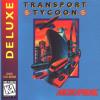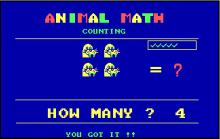Transport Tycoon Deluxe
Press Keyboard right side: Alt+Enter keys to switch to full screen game play, and Alt+Enter keys to return.
How to play Transport Tycoon Deluxe
Each game uses different controls, most DOS games use the keyboard arrows. Some will use the mouse.
Transport Tycoon Deluxe Description
To start building a transport empire, the player must construct transport routes, consisting of stations near industries or towns, and in the case of trains or road vehicles, near physical routes. One transport route can utilize several different forms of transport, e.g. truck→ship→train. The player's company and the individual stations each have ratings that depend largely on their efficiency at moving goods from one stations to the other. A station with high ratings may attract more goods.
The game begins in 1930, and ends in 2030. The player starts out by borrowing money to finance construction of transport facilities, and is charged interest until the loan is repaid. As the user plays the game and earns revenues, they have the choice of expanding service along existing routes, or expanding their transportation network. The game features a progression of technology: in any particular year of the game generally only contemporary types of technology are available. For example, railroad signals which allow more than one train to use a section of track are initially semaphores. Later they are replaced by red and green traffic-light signals. Similarly, in the beginning there are only steam engines, but later diesel and electric engines are introduced. In the game year 1999, monorails become available. These require a separate track system from railroads. If the player remains in business until 2030, the game announces that they have won, allows them to post their name on the "hall of fame" and then continues. At this point, the year stays 2030 and never goes any higher, although the game can continue indefinitely. Playing the entire 100-year campaign takes about 40 hours. The game allows the player to save at any time, and multiple saves of a particular game at any point are possible.
Vehicles in the game must be constructed at corresponding depots, which must be connected to the road or rail networks. Towns and cities have their own road networks, but extra roads may be needed to connect them to other towns, or to various resources.
Chart illustrating flow of commodities between industries and towns in Transport Tycoon, and Temperate scenarios in Transport Tycoon Deluxe.
The player earns revenue by picking up resources or passengers at a certain station, and delivering them to another station where there is a demand for them. Demand is determined by the area which surrounds the station; for example stations close to towns will demand passengers. The revenues will depend on the delivery time, distance, and quantity delivered. The influence of these factors on revenue varies according to the type of goods being delivered. For example, mail will rapidly fall in value, meaning that it can only be delivered profitably over short distances, or over long distances very fast. On the other hand coal loses value very slowly, so it can be transported in bulk over long distances whilst remaining profitable.
At times, subsidies are offered to the first company to move a particular resource from one place to another. This encourages the player to create a larger more complex transport network, rather than focusing on previously profitable routes.
The game features a system of Local Authority. Each city has a rating for every transport company based on the impact of their transport network. When the rating falls too low, the player will no longer be able to demolish buildings or construct new stations. The rating depends on, among others, the level of service and the deforestation caused by the company.
In the course of a game cities develop and expand according to various economic factors, and new industries (demand) or other resource sites (supply) may appear. Some natural resources may also eventually be exhausted and industries without adequate transport service may shut down. Also, new models of vehicles are introduced and eventually come to replace older models. At introduction such a new model will likely have improved characteristics, but may suffer from reliability issues.

Transport Tycoon Deluxe - additional information
















